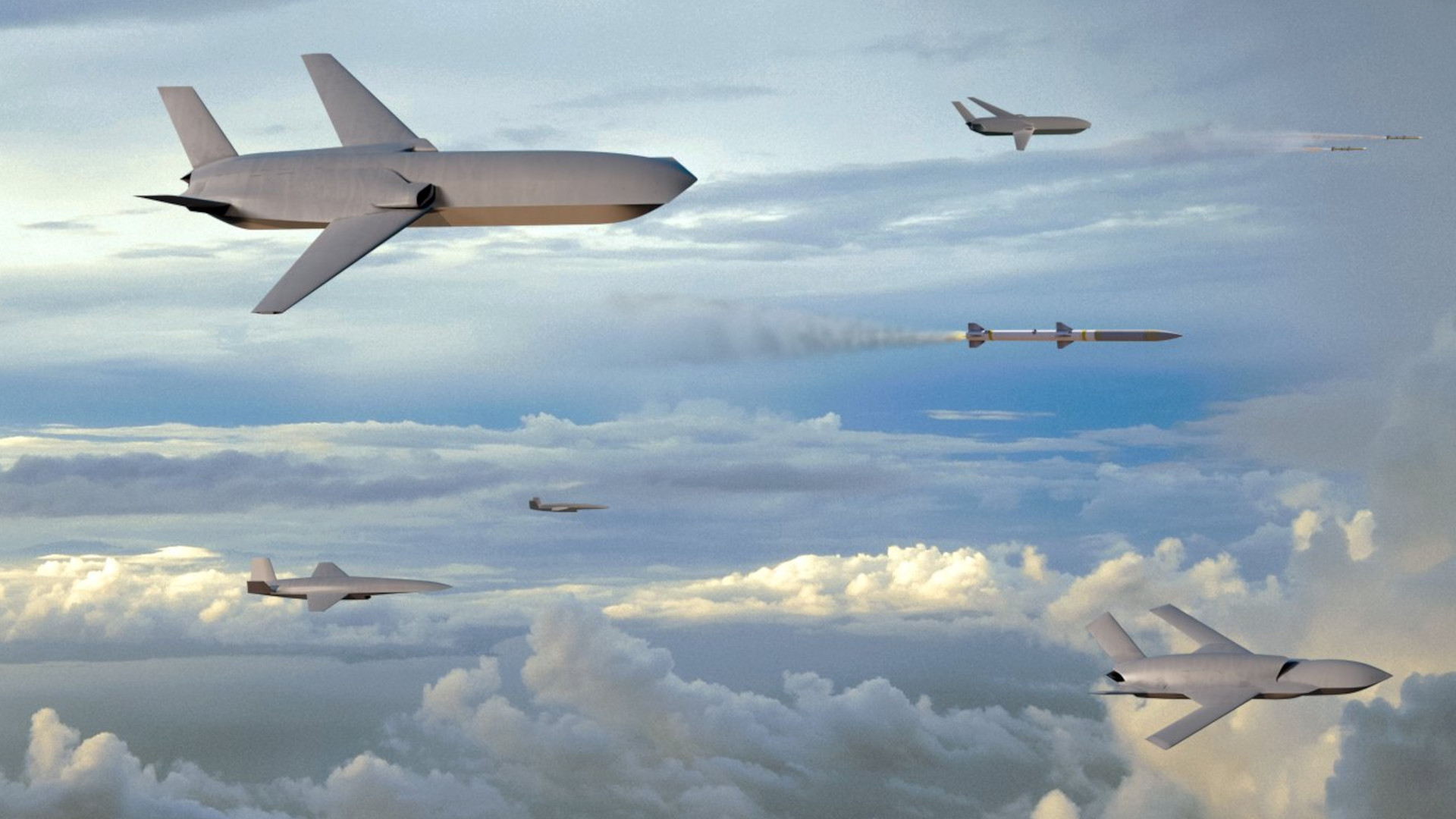It is a “misconception” to say that the advanced drones that the U.S. Air Force is planning to acquire in the coming years will necessarily be “attritable,” according to a senior officer who has been directly involved in the initial planning process. This reflects a broader shift away from the term attritable — meaning inexpensive enough to be willing to lose on high risk missions while being capable enough to be relevant for those missions — to a new concept the service has dubbed “affordable mass.” This is something The War Zone previously highlighted was already happening back in 2021.
Maj. Gen. R. Scott Jobe, the Director of Plans, Programs, and Requirements at the Air Force’s Air Combat Command (ACC), made his remarks during a panel talk at the 2023 Air and Space Forces Association’s Warfare Symposium, which wrapped up on Wednesday. Jobe was speaking alongside Brig. Gen. Dale White, the Air Force’s Program Executive Officer for Fighters and Advanced Aircraft, as well as General Atomics Aeronautical Systems Inc.’s (GA-ASI) President of the Aircraft Systems Group David Alexander and Shield AI’s Director of Product Mike Benitez.
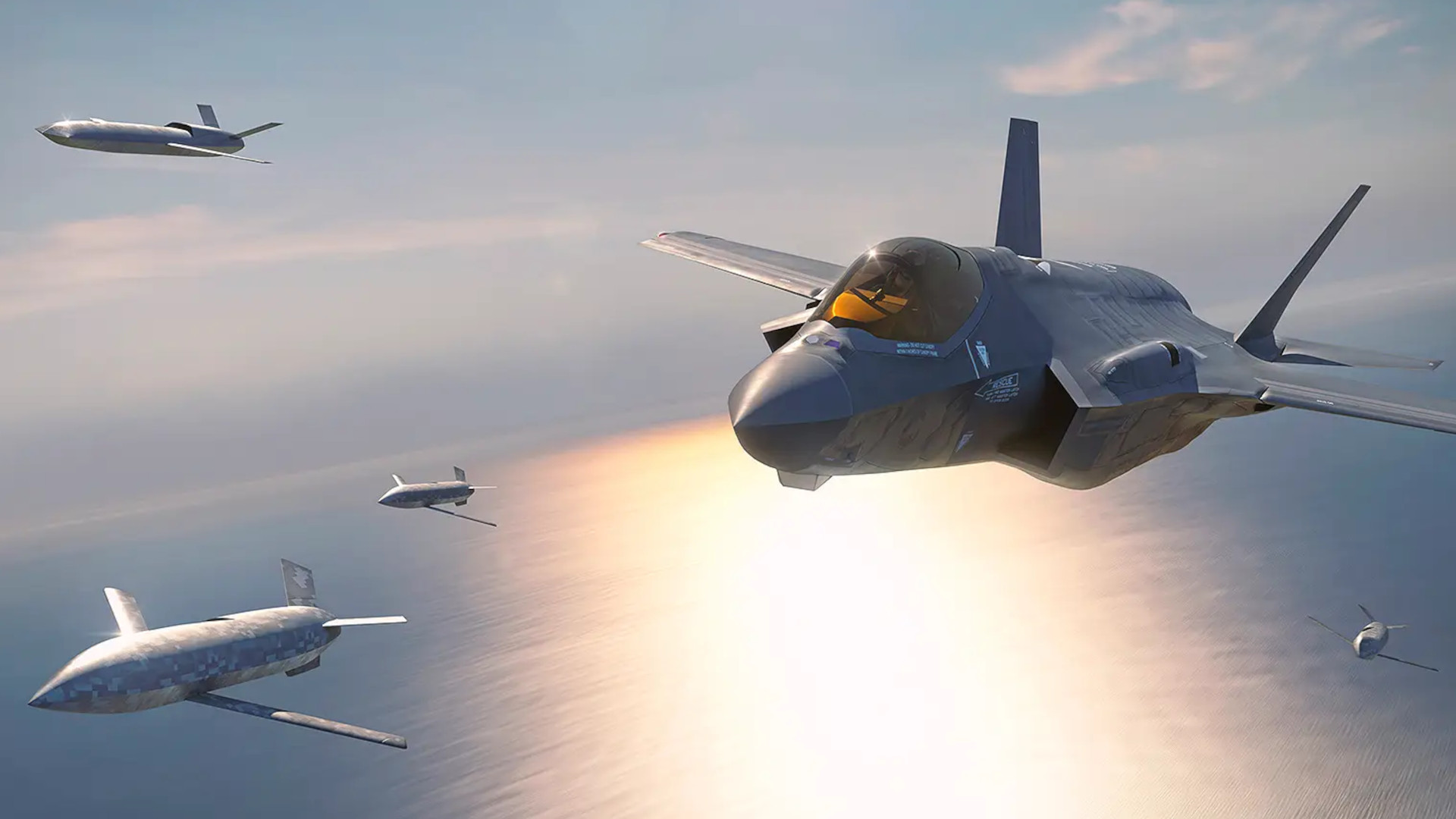
The War Zone was among those in attendance at this event, which was focused on the Air Force’s Collaborative Combat Aircraft (CCA) program. CCA is centered on the acquisition of advanced drones with high degrees of autonomy intended to work closely together with crewed platforms, initially primarily in air-to-air combat roles. CCA is part of the larger Next Generation Air Dominance (NGAD) initiative, which also includes the development of a new sixth-generation stealthy combat jet and various other advanced systems like new weapons, sensors, networking and battle management suites, advanced jet engines, and more.
Earlier in the week, Secretary of the Air Force Frank Kendall disclosed that, for planning purposes, the service is currently looking at initial fleets of 1,000 CCAs and 200 NGAD combat jets. The 1,000 CCA figure is based on an expected ratio of two of those drones to each of the 200 NGAD combat jets and 300 F-35A Joint Strike Fighters.

“I like to say affordable mass,” Jobe said during Wednesday’s panel discussion. “If we can get a price point that gets what Secretary Kendall talked about, maybe 1,000 [CCA] air vehicles out there… that gives us enough capability to provide effect on the battlespace, then it is really a game changer.”
“The affordable mass concept, and all our analytics, supported by multiple efforts across the Department of the Air Force, partnered with other departments, as well, specifically the Navy show overwhelmingly that this provides us an overmatch capability and changes our loss-exchange ratios dramatically in our favor,” he added.
However, “It doesn’t mean though that this is an attritable type of platform and that’s been a common misconception,” Jobe noted. “This is about affordable mass.”
The exact definition of the term “attritable,” which really began being more actively used in the mid-2010s as a result of the Air Force Research Laboratory’s (AFRL) Low-Cost Attritable Strike Demonstration (LCASD) project, has always been somewhat in flux. It has been generally used to describe aircraft designs and other systems developed with a specific balance between low cost while delivering relevant capabilities that makes it less of an issue if they are lost in combat. This would allow commanders to send them more freely into high-risk environments. Even sending them on one-way missions could be a possibility in some circumstances depending on the design. At least in some collaborative contexts, these platforms could then help ensure higher-end and costlier ‘exquisite’ platforms are more survivable.
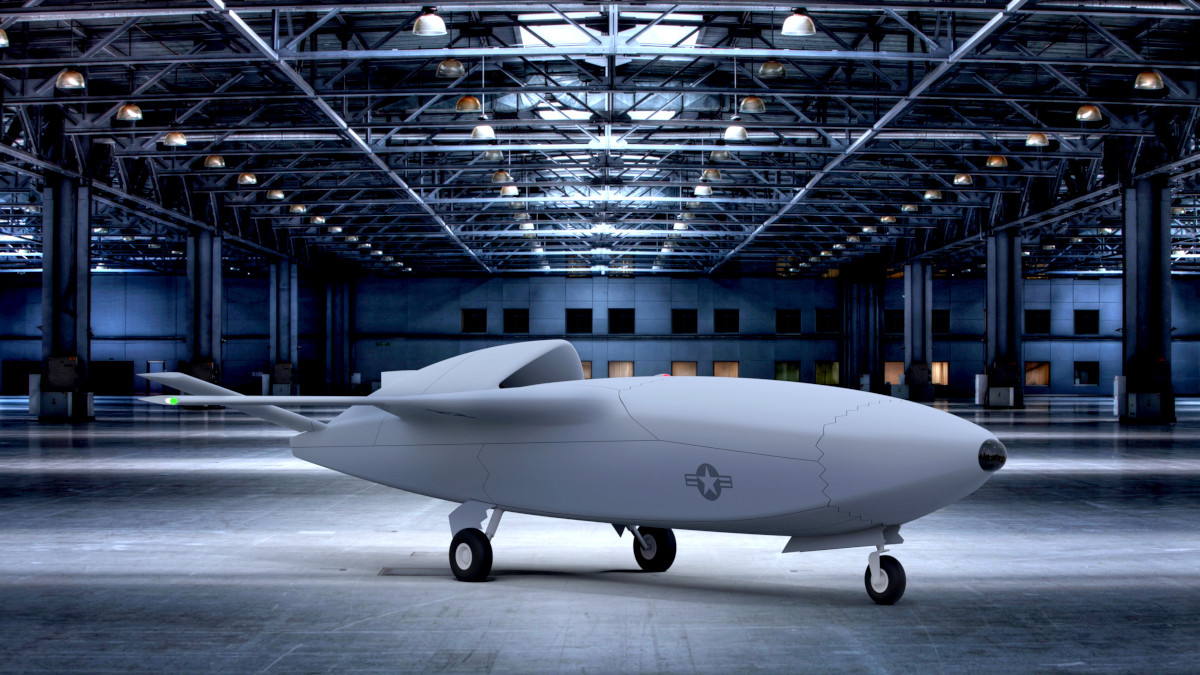
Other definitions of attritable have been presented over the years. This includes ones that focus on a raw unit cost metric, set in a very broad range between $2 and $20 million, or platform life expectancy, often expressed in total expected sorties when discussing aircraft designs.
“We’ve got to make sure that everyone keeps an eye on that we’re going to reuse these air vehicles and that the decision for risk, of risk that we will take with these type of capabilities, will be at the mission command or at the combined forces air component command level,” Maj. Gen. Jobe stressed. “It’ll be at the point in time when you’re making a risk decision in combat, not at the industrial side of design, not at the engineering level.”
Jobe did acknowledge that various decisions about the capabilities of the future CCAs, such as what weapons, sensors, communications suites, and other systems they might carry, would have to be made at the design and engineering levels. He, as well as Brig. Gen. White, referred to the “trades” that would still have to be made to balance affordability and capability.
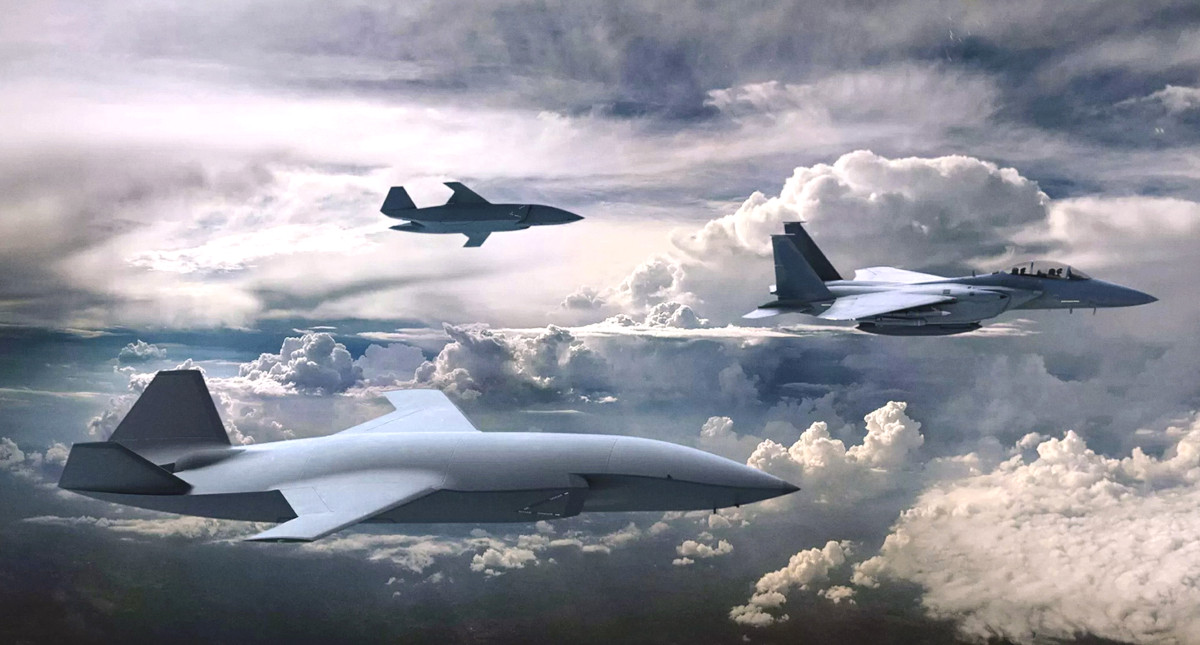
“Affordability is only as good as the capability that goes with it. No matter how cheap it is, if it doesn’t achieve the effect we need… in the battlespace, then it’s not going to do what we need it to do,” White said. “So affordable mass has to be based on affordability and capability… We have to start thinking through the lens of lethality for development.”
“We always knew the decision space was at the mission planning level. We could not force decisions in design that limited the flexibility of the warfighter or the commander for him or her to make that decision at the beginning of each mission,” he added. “This is the challenge. You got to unleash it [the CCAs], right? And we got to be able to build platforms and capabilities that allow us to have that flexibility.”
At least when it comes to the affordability aspect, Jobe and White’s remarks are very much in line with what has been heard from Air Force officials, as well as industry representatives, in recent years. Jobe said at a previous media roundtable on the CCA program in November 2022 that he expected these drones to offer “a lot of potential capability at a lower price that we hadn’t seen before.”
“If… we develop an attritable aircraft, that means that after some number of missions or flights they would accept if the airplane didn’t come back,” Steve Fendley, President of the Unmanned Systems Division at drone maker Kratos, which was heavily involved in the LCASD project, and many similar efforts since then, told The War Zone in an interview in 2021. “I can’t design an airplane to be good for five flights, right?”
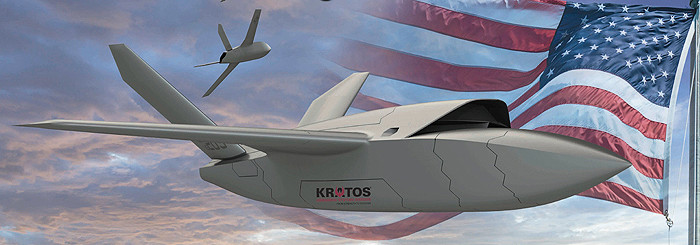
“You have to design to cost, which is one piece, then you look at it and say, okay, we’re designing to cost here, but we just figured out that for one more dollar we can add 20 percent to this part of [the] performance, we should do that,” Fendley continued. “And, oh, by the way, we can subtract two percent on this performance parameter and save 20 percent of the cost of this production item, so we should do that.”
The main issue that remains to be solved, of course, is how to achieve this affordable balance. At the panel alongside Maj. Gen. Jobe and Brig. Gen. White, GA-ASI’s President of the Aircraft Systems Group David Alexander pointed out that 1,000 examples of any substantial aircraft design is not a small number, especially if there is a need to acquire that fleet in a relatively short timeframe.
“Say we assume it’s like 200 aircraft a year… that’s a considerable production rate,” he said. He further recommended tapping into the commercial aerospace industrial base to help with this, along with leveraging advances in additive manufacturing.

The affordability equation extends beyond the basic unit cost of a single CCA, whatever form it might take in the future, too. The Air Force has now said on multiple occasions that integration of these drones into future force structures is likely to prompt significant changes in how the service operates, both in combat and on a general day-to-day basis, as well as require new infrastructure.
CCA will have high degrees of autonomy and their capabilities in this regard are expected to expand over time. “You can’t get hung up in a program that’s going to have to go through an airworthiness panel every time you want to release a new set of autonomy [functionality] or a new algorithm,” General Atomics’ Alexander noted.
Just like there were hints that the Air Force was moving away from a concept of attritability to one of affordability years ago, there are now indications that at least a debate is ongoing within the service about just where the sweet spot is between affordability and capability.
Secretary Kendall made clear this week that he is fully in agreement about the need for affordability. At a media roundtable on Tuesday, he warned that focusing too much on very high-end platforms threatened to make the future Air Force “unaffordable.”
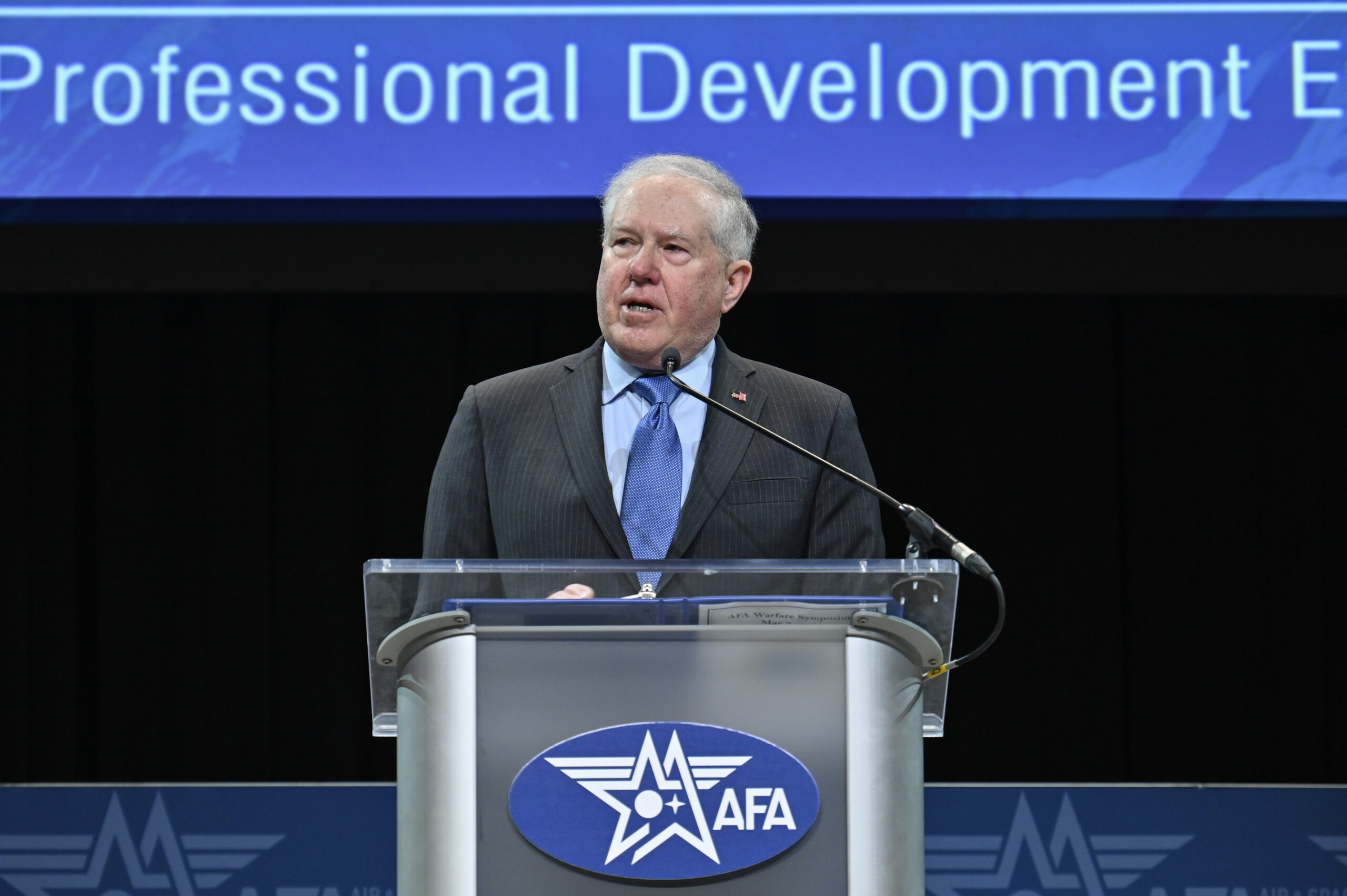
At the same time, he said that “if we ask for too much [of the CCAs] we’re gonna get bogged down trying to get what we need” and there was a need to make sure the drones didn’t end up “gold-plated.” This could be seen as at least somewhat at odds with the statements from Maj. Gen. Jobe and Brig. Gen. White, which put a heavy emphasis on desired capabilities.
All the parties do seem to be firmly in agreement in effectively repudiating a series of ideas linked to concepts of attritability that became prevalent in the late 2010s. Then-Assistant Secretary of the Air Force for Acquisition, Technology, and Logistics, Will Roper was the chief advocate of these proposals, which included a questionably ambitious initiative referred to as the Digital Century Series.
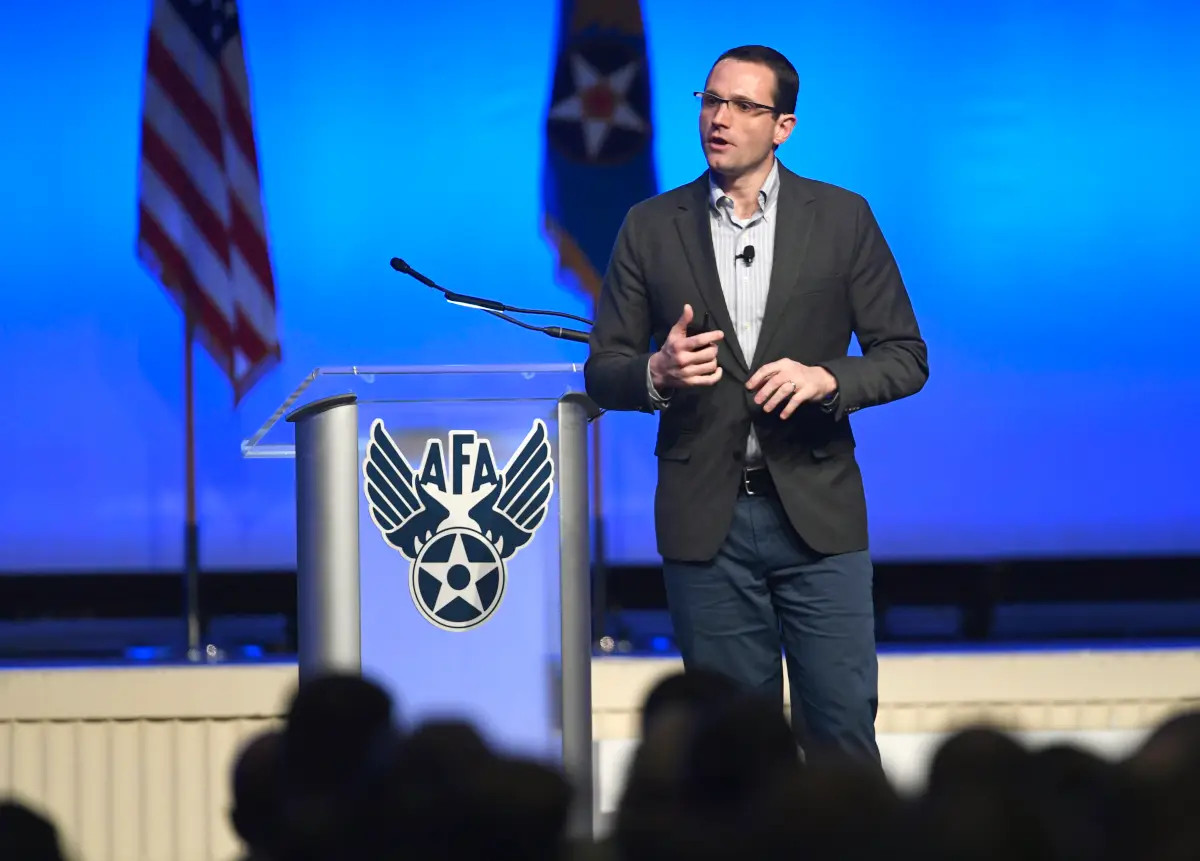
Digital Centry Series envisioned the rapid design of aircraft, crewed or uncrewed, which would then be bought in small batches and would have very limited lifespans. There was related talk at the time about “throwaway” technology and essentially “disposable” aircraft. This would, in many ways, seem to be exactly the kinds of discussions around attritability that Maj. Gen. Jobe was referring to when he talked about current misconceptions.
“I have a lot of respect for Will Roper. I’ve worked with him a lot,” Secretary Kendall had said at another Air and Space Forces Association event last summer. “I think he has some really interesting ideas … [but] I think you have to be careful about where you apply those ideas.”
The Air Force is very much still in the process of refining its requirements for its future CCAs. The matter of balancing cost and capability, whatever term is used to describe that, is clearly central to those discussions. The service also other separate advanced uncrewed aircraft programs ongoing that are heavily focused on exploring new design and production concepts to reduce costs and acquisition timelines. This includes the secretive Off-Board Sensing Station (OBSS) effort that you can read more about here.
How to address affordability is a major issue for the companies that will be competing to build these CCAs, too. Last year, General Atomics unveiled a novel concept for a family of very disparate drones, called Gambit, that all share a common core structure to simplify design and production, and keep costs low. One of these Gambit designs is now set to become the OBSS prototype.
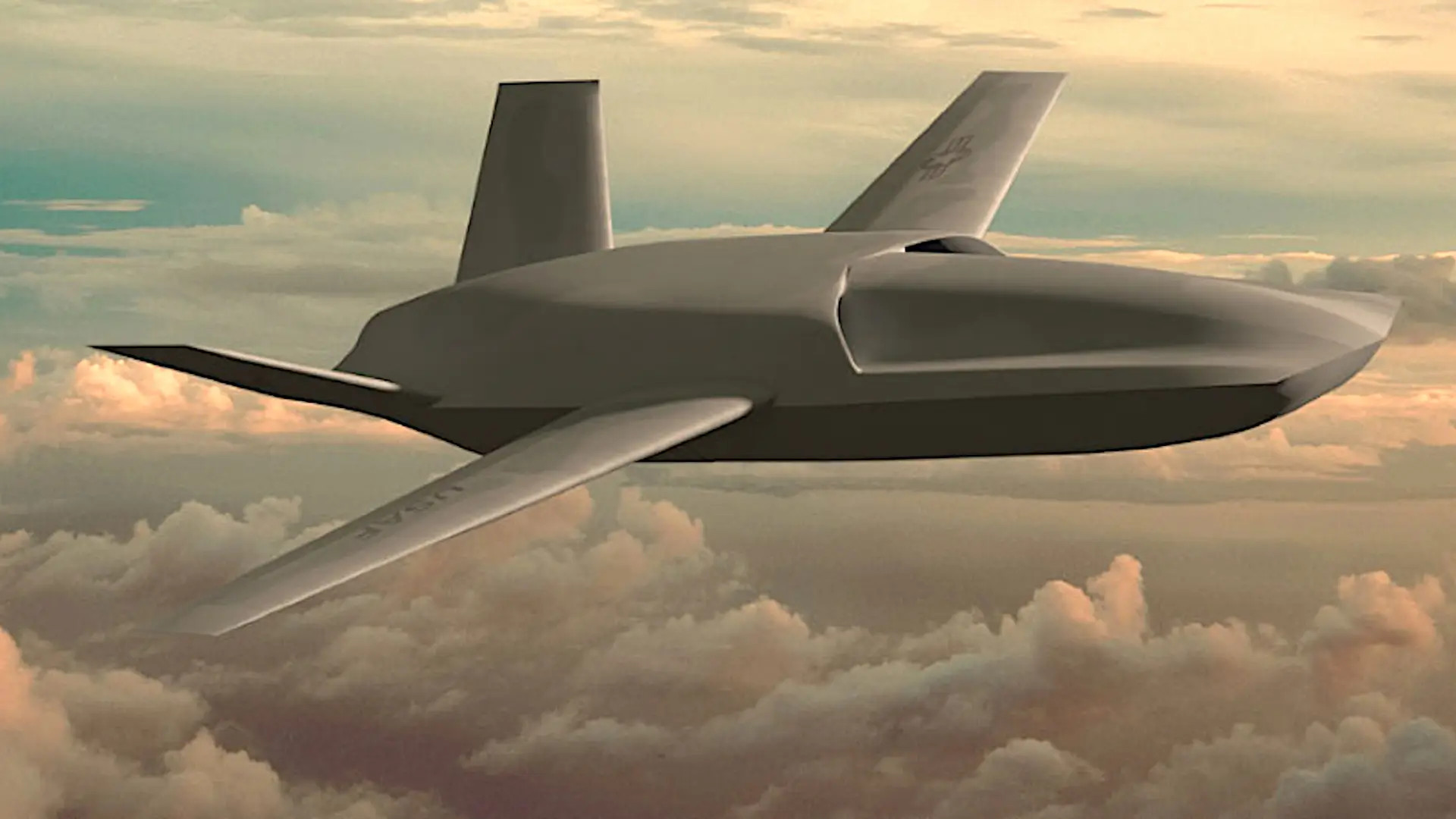
Lockheed Martin is working on an internal effort called Project Carerra that will make use of a drone design developed as part of a separate program called Speed Racer to test new artificial intelligence-driven software-based autonomous control systems. Speed Racer’s main focus had been on proving out the ability of advanced digital engineering and physical manufacturing techniques to help quickly produce an airworthy design at a relatively low cost.

Northrop Grumman, Boeing, and Raytheon have also publicly announced work on advanced drones or related systems that seem at least relevant to the CCA program, which will have to address these affordability requirements, too. It remains unclear whether or not the CCA program itself will involve the acquisition of multiple different drone designs.
The Air Force could pursue the acquisition of additional tiers of advanced uncrewed aircraft with other cost targets, including more exquisite types, outside of CCA. Programs focused on acquiring other completely runway-independent types or those capable of being air-launched could prompt the Air Force to potentially circle back prior concepts based around attritability, too.
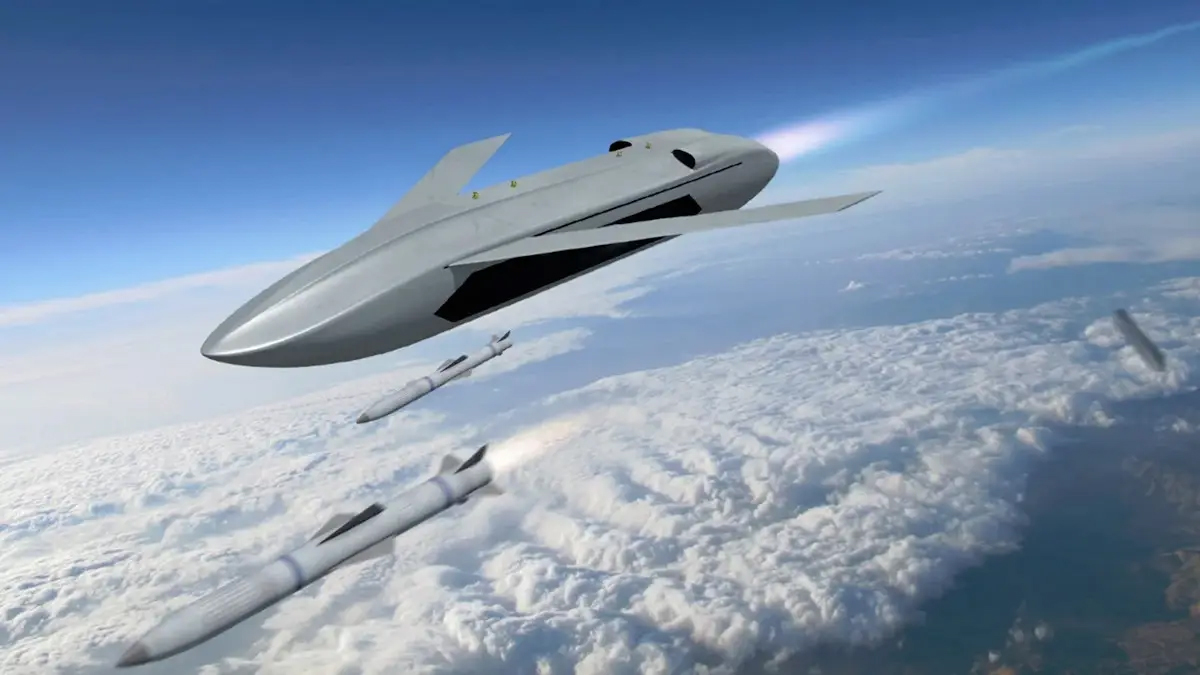
The Air Force isn’t alone in being presented with these challenges. As Maj. Gen. Jobe noted, the affordable mass concept was crafted in part with input from the U.S. Navy, which has its own separate, but clearly intertwined Next Generation Air Dominance (NGAD) Program.
It is worth noting that the issue of balancing costs and capabilities is something virtually any military aircraft or other weapon program has to contend with. However, statements from senior Air Force officials suggest that this is particularly pronounced when it comes to CCA.
This would seem to be due, at least in part, do to the large quantities that these uncrewed systems need to bought in and how rapidly they would be procured. As well as the fact that they are, in effect, at least primarily tactical accessories of far more expensive platforms. It also would have to do with concerns Secretary Kendall recently outlined about the service becoming unaffordable, not just expensive, if fundamental changes don’t get made. Whether there is a significant debate about what the program’s core goals should be or not, the Air Force has made clear that it views the success of the CCA effort as an operational imperative for the service to achieve its desired level of dominance over any adversary in the future.
If nothing else, no matter how the CCA program’s cost and capability requirements continue to evolve, the Air Force looks to be firmly moving beyond the idea of attritability to one defined by achieving ‘affordable mass.’
Howard Altman contributed to this report.
Contact the author: joe@thedrive.com
